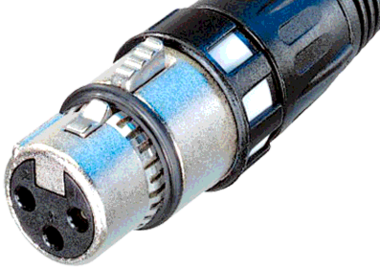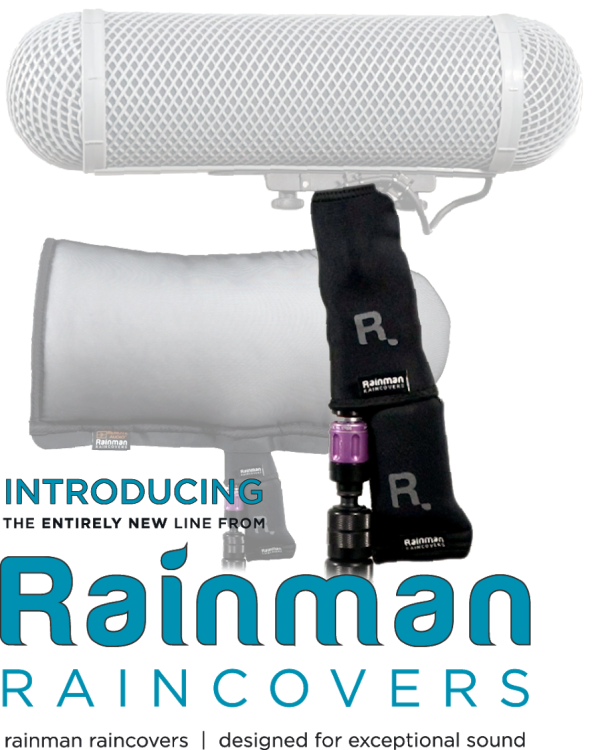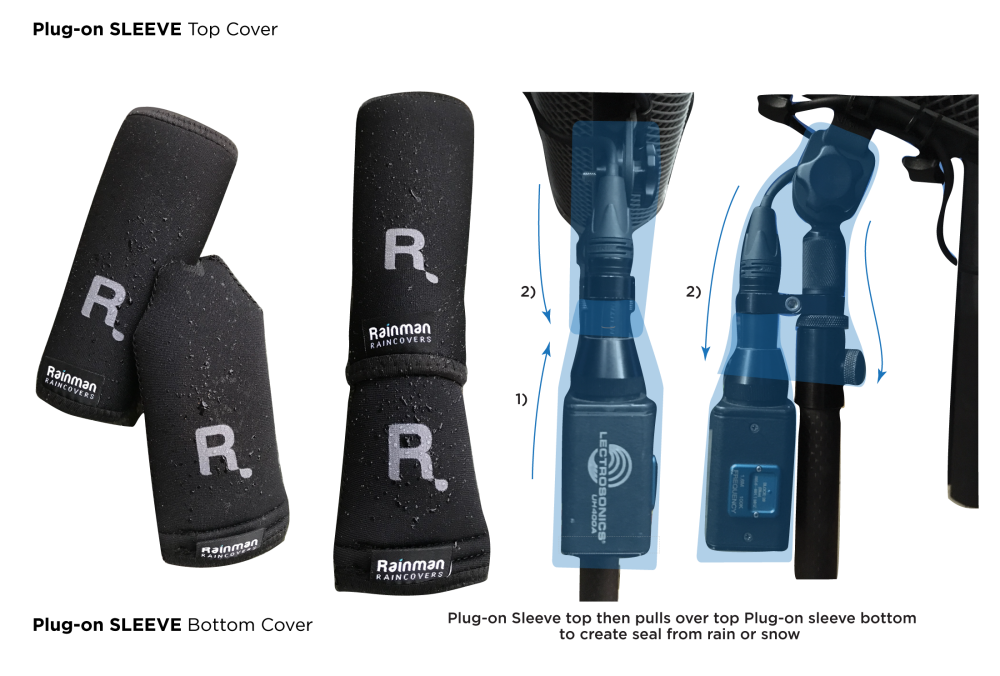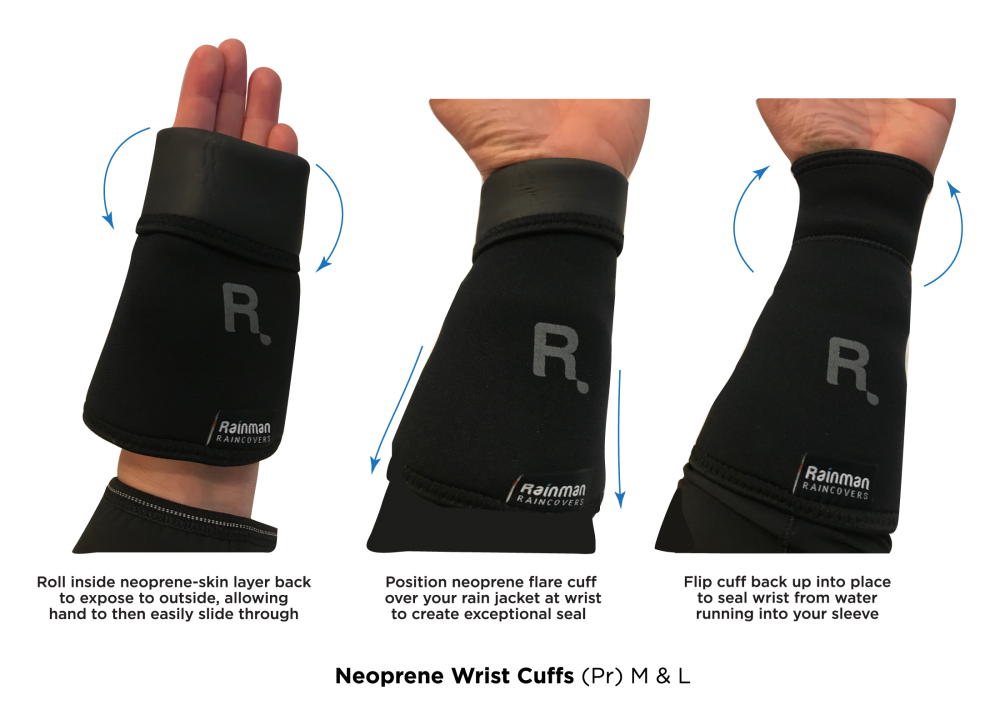
13324
-
Posts
230 -
Joined
-
Days Won
3
Content Type
Forums
Gallery
Store
Posts posted by 13324
-
-
Remote Audio has updated and expanded their Rainman line, with a redesigned rain cover and introducing new transmitter covers (for plug-ons and body packs) as well as wrist cuffs. Trew Audio released a video (featuring @Glen Trew) to demonstrate the new products:
Some images from Trew Audio’s email announcement:
-
A great video from @JimKeaney in Boston, featuring a Dinkum Systems FlexiMount, Ursa Straps WireRig, Peter Engh Omnigoose, Sanken CUB-01, and Bubblebee Industries Lav Concealer:
-
Quote
Putting a Rode Wireless Go on the output of the Recorder would enable me to hear at least possible rustling or wind noise.
Great idea.
-
I tried Wisycom once and their included manuals are indeed lackluster. Unfortunate despite the nice sound quality I got.
When in doubt, dual-battery is better since it necessitates less battery changes.
-
On 5/19/2019 at 10:28 PM, TVPostSound said:
Boom sounds like its 10 feet away in a warehouse.
EDIT: Just found out, its the AC mixing the interviews (AAAARRRGGGHHH)
:( Good luck to ya.
Are wired lavs standard for sit-downs? As much as I would like that, I’ve still been asked to run wireless for interviews.
-
3 hours ago, nick kolias said:
I've always felt a little uneasy about how cavalier production can be with SS numbers and personal info.
I suggest applying for an Employer Identification Number. From my understanding, it can substitute for a Social Security Number when doing business even as a sole proprietorship.
-
Here’s the feed URL to subscribe to the show, via a podcast app:
https://feeds.soundcloud.com/users/soundcloud:users:462459738/sounds.rss
-
I think you have the only good solution, since more convenient options end up compromising security.
You could use something like Firefox Send or Lufi, which lets you limit how much and how long files can be downloaded. But that won’t stop people from just emailing around files insecurely. (This happened to me.) A similar thing can happen if you use conventional services like Dropbox or Google Drive.
Ultimately having the files themselves be password-protected is the best solution I can imagine. Plus it’s not a terribly uncommon practice in the business world. I’ve received tax documents as password-protected PDFs.
I suppose you can use a dead-simple password scheme, like the recipient’s phone number.
-
Noticed this on Neutrik’s website. Posting here as an FYI to digital audio users here.
QuoteThe XCC XLR cable connector Series with circumferential shield contact provides excellent RF-protection to transmit digital audio signals most efficient and reliable. This XLR features a coaxial ground spring and a coaxial hex crimp ferrule at the cable entrance for proper and reliable transition of the shield to the shell.

-
-
Looks like On-Stage Stands makes a very similar folding cart, the UTC2200. Comparable specs to the Rock-n-Roller R6RT and priced the same, though better-reviewed (at least on Sweetwater and Amazon).
-
From Gotham Sound:
-
From Gotham Sound:
-
17 hours ago, IronFilm said:
I have heard that currently it is largely based on the Nomad UI but they're still in the process of changing this and it could be more Deva like when it finally is shipping.
Hope it trickles to all their recorders then. Used Maxx purchase, here I come.
-
I was hoping that they would step up their user interface design…
I once considered saving up for the Maxx, but Zaxcom’s cluttered UI annoys me. It honestly doesn’t make much impact compared to, say, preamp quality. And I’m probably alone in my opinion.
Though from paging through the Maxx manual, I can’t help but spot the flaws. An unnecessarily large battery indicator, using large words instead of ⏹ ▶️ ⏺ symbols for some reason, matrix icons that barely have contrast between toggle states, AutoTrim indicators that almost blend in with the black meter background, the addition of visual clutter when unarmed tracks are crossed out with yellow lines… I can’t imagine using a Maxx or the Nova without it confusing or annoying me occasionally.
No offense meant to Zaxcom users who find the design works well or just fine, seriously, and not everything has to be pretty. But to my eyes, it pales compared to similarly-/lower-priced recorders from Sound Devices and Zoom (dare I say, even the F4 to some extent) that have more efficient and better-thought graphical user interfaces. For something I’ll use 12 hours per work day, I’m more inclined to invest in those recorders.
Sorry for a rant, but hopefully it’s constructive.
-
6 hours ago, Freeheel said:
they are way more convenient to grab a single battery with one hand
Amen to this.
Also RED ALERT, IKEA LADDA 2450 batteries are now available for purchase online. Surprised they haven’t wisened up and increased the price as well.
-
This topic has been deleted.
-
I had a moment of cognitive dissonance seeing him play at the World Series of Poker in that video, while remembering him for Big Black.
-
Audio Limited vendors in the US (namely TAI Audio and Gotham Sound) are promoting instant rebate offers for A10 wireless, running through the end of May. Anyone taking advantage of it?
-
Effects pedal manufacturer EarthQuaker Devices took a tour of Electrical Audio, with its owner and prolific recording engineer Steve Albini. Cool insight into his recording philosophy and general audio nerdery:
-
Thanks for the interesting video, @mono. I really ought to pay an audiologist a visit.
Best part, to me:
QuoteThe data is saying that the risk of damage is worse if you are overly stimulating the [ears] in a stressful situation, compared to stimulating [them] in the exact same way mechanically but in a really happy situation. […] That hardcore stress, when things are going really poorly and you can’t get out of it – that’s the dangerous situation. So when you know you’re really stressed, turn it down. Turn it down and you’ll do less damage.
-
-
While researching IFBs, I came across a product from Listen Technologies – Listen Everywhere, a wireless audio streaming system catered to venues, where users can listen (to e.g. a TV at a sports bar, speech/music in houses of worship) via Wi-Fi and an app on their phone. This video explains it well:
When viewed the same way as the Teradek Serv,¹ a wireless video transmitter that beams camera feeds to smartphones and tablets, Listen Everywhere got me thinking.
For cart-based mixers with a shelf to spare for a compact server and a router, Wi-Fi audio streaming could theoretically be applied in a film production setting. A cautious sound mixer may still keep a conventional IFB system for directors and scripties who require more reliability. But for those big commercial productions who would otherwise rent dozens of IFB receivers for producers, ad agents, and guests, a Wi-Fi stream to their phones is potentially advantageous. No more receivers for people to damage or lose, less equipment for sound mixers to maintain daily, and potentially less cost for the production. Plus it makes for an attractive rental package for sound mixers to offer producers, who want the luxury of anyone on-set being able to hear the scene.
I’m being very idealistic and haven’t put more than a few late-night hours of thought into this. But what does everyone think about the practicality and feasibility of using a Wi-Fi audio system on-set to replace conventional IFB?
1. Sidebar: Has anyone sent audio to clients via the Teradek Serv? It apparently also transmits audio, so combined with a wireless hop feeding audio into the camera…
-
Zoom North America, “Firmware Update: V3.0 for F4”:
QuoteFor existing users of the F4, this update will add some key functionality found in the new F8n.
-
Advanced Look-Ahead Hybrid Limiters
[…] -
Zoom AutoMix™ function
[…] - Improved TC accuracy when powered off
- Digital Boost for headphone monitor (up to +24dB)
- Ability to record to SD card and USB Audio Interface simultaneously
-
Advanced Look-Ahead Hybrid Limiters

.png.279748a58a2b862b7aa5f3b84126e232.png)





Low cost, folding sound cart
in Equipment
Posted
Again found a similar folding cart, made by the house brand of German music equipment vendor Thomann: the Millenium Go-Kart Truck XL. Identical in carrying capacity to Rock-N-Roller’s mid-range R10 model, but $100~ USD less.
It seems to be exclusively sold by Thomann, though they offer a three-year warranty and 30-day return policy. I may end up purchasing this one for an upcoming feature, along with Rock-N-Roller’s carpeted shelf to see if they’re compatible. My only wish was that Thomann/Millenium also sold wider casters for more challenging terrain, but I bet I can find stem casters sold elsewhere that may fit.
Also, I found a video from photographer Tony Roslund showing his simple Rock-N-Roller modification to make the shelf accessory easier to install: